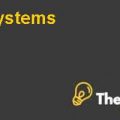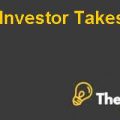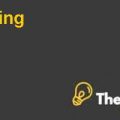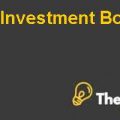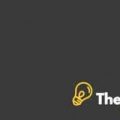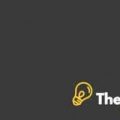McKesson Corporation
INTRODUCTION
The 178-year old McKesson Corporation was the largest healthcare service provider company in America and was ranked 15th in the Fortune 500. The San Francisco, California based company was the leading provider of health care equipment, medical, surgical products, software and connectivity solutions, drug distribution and other services to a range of health care customers. The company had more than 36,000 employeesand $112 billion in revenues. McKesson supplied its products and services to half of all hospitals, 40% of pharmacies and about 90% payors in the America. The vast access built a strong brand name of the company in the US and had strengthened its financial condition.
McKesson Corporation was founded by John McKesson and Charles Olcott in 1833 as a wholesaler of chemicals and therapeutic drugs out of a small shop in New York City. Since its inception, the company never missed any growth opportunity and as a result after fifty years the company had diversified its business portfolio by adding several wholesaling businesses and was trying to become the leading pharmaceutical products distributors. In the path of its success and growth, McKesson used merger and acquisition techniques which greatly helped the company in expanding its business in both production and distribution categories. The primary customers of McKesson were independently owned pharmacy general-stores that sold medicines and common household goods. With the passage of time, the company focused only on health care business and in the late 1980s and 1990s they divested non-health businesses.
The company’s first merger was in San Francisco, California based dairy company in 1960 and later on it made several full and partial acquisitions which included Canadian, Mexican and US drug distributors, a manufacturer of drug dispensing system for hospitals, a medical supplies producer and in 1999 McKesson acquired a giant medical software company HBO & Co (HBOC) for $14 billion in stock. This acquisition helped the company to step in the information technology segment and the company was gradually updating its information technology branch through further acquisitions. From 2006 to 2011, McKesson purchased USON (US Oncology) for $2.1 billion and had executed 30 acquisitions for a total of $5.7 billion. Under the leadership of the CEO John Hammergren, McKesson doubled its revenues from $42 billion in 2001 to $112 billion in 2011. Over the same period, the company’s 10-year total stockholder return of 12.3%, far outpaced the 3.3% return for the S&P 500 index. Earnings per share of the company increased at a 13.9% compound annual growth rate.
The operating segment of the company could be divided into two segments: Distribution Solutions and Technology Solutions. Distribution Solutions were accounted for 97% of total revenues with a gross profit margin of just over 4%, whereas Technology Solutions were accounted for 3% of total revenues with a gross profit margin of approximately 44%. The Distribution Solutions segment was accountable for the distribution of drugs, health care products, medical surgical supplies and equipments. The segment was also accountable for other services which included: consulting, specialty pharmaceutical solutions to hospitals, health care systems, retail pharmacies, physician offices, long-term care facilities, surgery centers and home care businesses. The customers of this segment vary in size and it had customers as large as Wal-Mart and US Department of Veteran’s Affairs and as small as a single store retail pharmacy and small medical purchases. The second segment deals with patient care, clinical, financial, supply chain, pharmacy automation, and management software applications for hospitals, home care providers, physicians and retail pharmacies. The key strengths of McKesson included hospital supplies and equipments, software solutions, specialty drugs, generic drugs, medical surgical equipments, Health Mart and RelayHealth.
PROBLEM STATEMENT
The CEO John Hammergren of McKesson was considering designing and implementing a new strategy across the company to exploit other opportunities that were present in the industry and in different market segments of the industry. The company had numerous options to choose from as their future strategy, but it was a bit confusing for them because almost all of its operating units were performing effectively.
EXTERNAL ANALYSIS
Industry Analysis
STEEP analysis would help in understanding the condition of the US health care industry.
Social Factors: People in the US were increasingly becoming aware of the importance of health care products and were purchasing health care products frequently for different reasons which included prescription drugs and other drugs. The US population was aging because baby boomers entered in the age group where they need to have quality health care products on a frequent basis. The social life of people became dependent on technology, which changed their working habits, eating habits and such other habits that resulted in numerous health issues like obesity, stress, anxiety and many other issues............................
This is just a sample partial case solution. Please place the order on the website to order your own originally done case solution.

